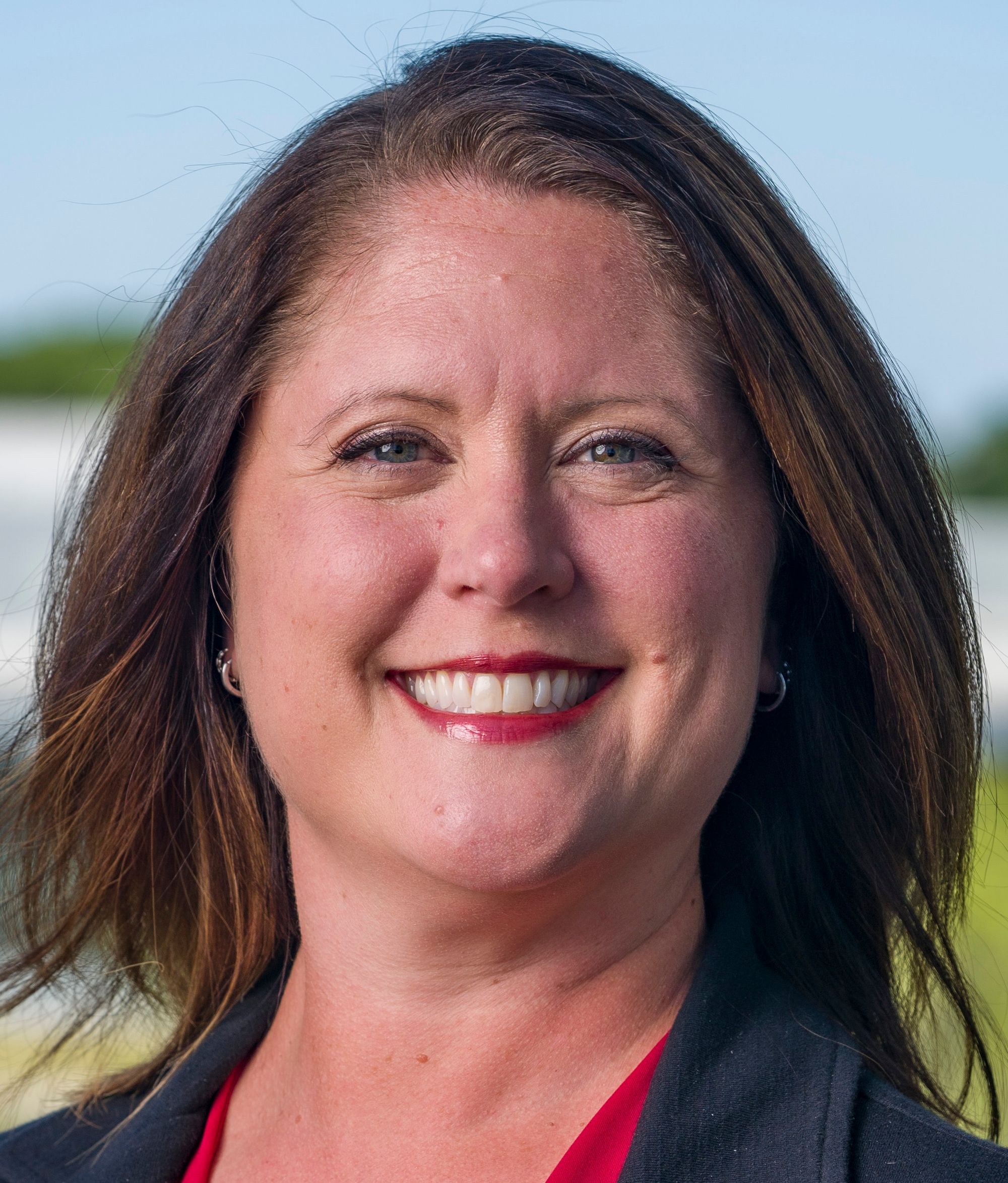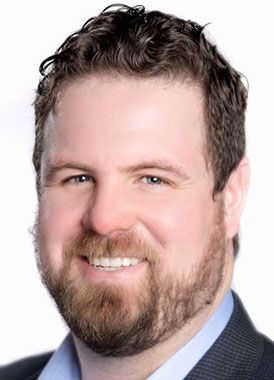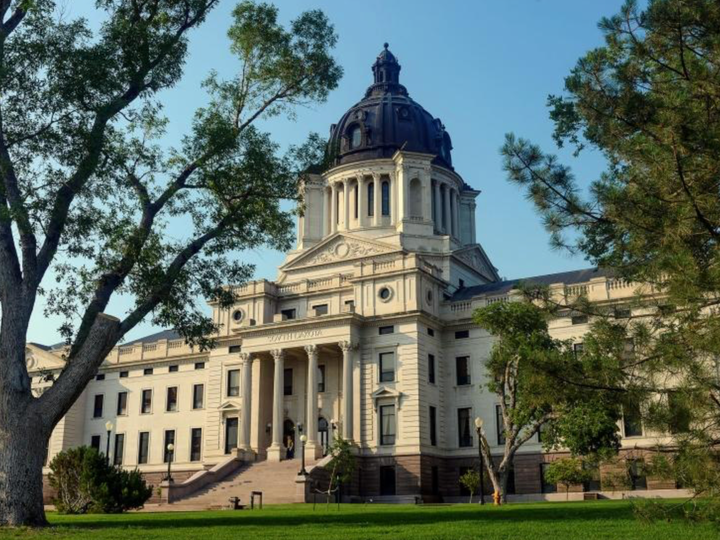Poll Part 2: Why some South Dakotans are pessimistic about the future

Long-standing economic hardships have prevented a sizable segment of the South Dakota population from achieving financial stability and prosperity, and those hurdles have resulted in a sense of pessimism for what awaits future generations, according to two experts who study the state economy.
State and federal data routinely show that:
- South Dakota employers pay some of the lowest wages in the nation.
- A high number of families pay an excessive portion of their income on housing.
- The state has a regressive system of taxation.
- Many workers are not seeing their pay cover the rising cost of living in the state.
- Meanwhile, the state is seeing a sharp spike in the cost of housing and health care, two critical components of living a happy life.
Those factors, the two experts said, may help explain why a recent survey of 500 South Dakotans showed that nearly half of respondents felt they were not doing as well as their parents at the current stage of their lives, and that 72% said they expected life will be the same or worse for their children or future generations of South Dakotans.
The telephone poll was commissioned in late April by South Dakota News Watch and the Chiesman Center for Democracy at the University of South Dakota. The 500 respondents came from all counties in the state and were fairly representative of the overall state in terms of age, gender and political party. The median income of the respondents was about 30% higher than the overall state average, and Native Americans were included but were underrepresented compared with the entire state.
News Watch provided the answers to some poll questions to three South Dakota economists before interviewing them.
While two professors pointed mostly to financial challenges among state residents as the reason for the apparent pessimism, one economist said the negativity is more likely the result of political division and overall uncertainty in the state caused in part by the COVID-19 pandemic.
Low-wage jobs dominate South Dakota workforce
Here is a look at the types of jobs that made up the non-farm total workforce of 435,600 jobs in South Dakota in April 2021. Taken together, the typically low-paying fields of retail and leisure/hospitality make up almost 22% of the state workforce.
Job type Jobs/Percent of total workforce
Health care 67,500/15.5%
Retail 51,600/11.8%
Local government 50,100/11.5%
Manufacturing 43,800/10.1%
Leisure/hospitality 42,600/9.8%
Transport/utilities 34,400/7.9%
Business services 32,900/7.6%
Finance 28,100/6.5%
Mine/log/construction 26,400/6.1%
General services 17,700/4.0%
State government 17,300/4.0%
Federal government 11,500/2.6%
Education services 6,900/1.6%
Information 4,800/1.1%
Source: South Dakota Department of Labor
All three experts said the pandemic and the loss of jobs and reduced income it caused either brought to the surface or exacerbated pessimism among South Dakotans.
Yet Kathryn Birkeland, an economics and labor professor at USD, said the pessimism in the poll results did not surprise her because South Dakota has long faced a set of consistent economic challenges, including low wages, a high burden of housing costs and a lack of upward mobility.
“Some people are being left behind and some people are really struggling and it’s a long-term trend,” Birkeland said. “Combined with rents and housing prices that have risen faster than wages, those people who are stuck in low- to medium-wage jobs are likely to feel that life is not improving now or into the future.”

"Some people are being left behind and some people are really struggling and it’s a long-term trend ... those people who are stuck in low- to medium-wage jobs are likely to feel that life is not improving now or into the future.” -- Kathryn Birkeland, USD economics professor
The poll results contained some positive economic signs for South Dakotans:
- Nearly three in five respondents said they were doing better now than five years ago.
- 64% said they have three months’ worth of expenses in savings.
- Nearly 70% said they feel very secure or somewhat secure about how much money they have set aside for retirement.
One economist said he doubts the pessimism showed by some poll respondents was driven by economic concerns.
Jared McEntaffer, president and CEO of Benchmark Data, a Rapid City non-profit consulting firm, said the relatively high median income of poll respondents points to more political or social unease for the pessimism.
The 500 respondents in the News Watch/Chiesman Center poll had a median annual household income of $75,000, about 30% higher than the overall statewide median income of $58,000.
The strong political polarization in the country and in South Dakota, coupled with an emotional hangover from the stress of the pandemic, likely led poll respondents to express some negativity, McEntaffer said.
“There’s just a lot of uncertainty, fear and frustration out there, so those emotions are probably running strong through the population right now more than they were a few years ago,” he said. “It makes me think it’s more of a political milieu, a general mood of the country rather than being driven by the economic realities.”

McEntaffer said his interpretation was not meant to downplay the real financial problems facing many South Dakotans, such as access to affordable housing or the ability to earn a livable wage. However, McEntaffer pointed out that the South Dakota economy fared better than most states’ during the pandemic and the rebound has come more quickly.
“That’s not to dismiss the real concerns weighing on people,” said McEntaffer, who has a doctorate in economics from the University of Nebraska. “I just think the bulk of it is coming from a different direction than the economy. It’s hard to see the justification for such pessimism in terms of the economic health of this state.”
Poll respondents were harsh in their view of the current state of democratic institutions in the U.S., and the political divide among poll respondents was stark in some cases.
Overall, almost 65% of respondents said they were very or somewhat dissatisfied with how democracy is working in the United States. Compared with Independents or Democrats, Republicans showed far less confidence in the effectiveness of some democratic institutions, including the executive branch, the Congress, the courts, colleges and universities and the press. Republicans were far more likely than Independents or Democrats to answer that life will be worse for future generations, with 60% of Republicans answering “worse off” compared with 52% of Independents and only 41% of Democrats.
Rents rising in South Dakota
Here is a look at the median rental rates for apartments or homes in South Dakota in December 2020. These rates jumped by 5.6% over the year prior and rose by 2.2% from the month prior. In order to not be considered “rent-burdened,” or spending 35% or more of gross income on rent, a single employed person with a 2-bedroom apartment would have to make about $15 an hour, or $31,200 a year.
Dwelling type Monthly rent
Studio $800
1-bedroom $725
2-bedroom $890
3-bedroom $1,145
4-bedroom $1,320
Source: Zillow.com
Costs of housing and health care rising
The inability to afford or maintain good-quality housing likely led some poll respondents to express some pessimism about the future, Birkeland said.
A recent U.S. Census survey showed that 32.7 percent of all South Dakota renters pay 35 percent or more of their gross income in rent, making the state one of the worst in the nation for its “rent-burdened” population.
“The same faction of people have been housing-burdened for the last decade … so, even though your wages have gone up, if your housing costs have gone up as well, it doesn’t feel like you’re ever going to get ahead and your children are never going to get ahead,” Birkeland said. “Looking out into the world, if you’re a person who hasn’t had a raise in your job for a few years, and you’re just happy to keep your job, and your rent just keeps going up, life doesn’t feel great.”
The increasing cost of health care is another economic factor that weighs heavily on many people’s outlook for future generations, Birkeland said.
“It would seem that we are most pessimistic about what the world is going to look like for our children and there’s some pretty big structural changes that will come about in our lifetimes,” Birkeland said. “The entire health-care aspect of our economy and how that’s funded and what it looks like cannot be ignored; those higher costs will be on the shoulders of those who are still working in 30 years.”
Birkeland said a sense of foreboding may exist among people 35 and older who have recently endured two major national financial interruptions — the Great Recession of 2008 and the ongoing COVID-19 pandemic.
“It’s great for some of us,” she said of the economy. “It’s great for those who are able to sell their house or who produce things in an industry that is in high demand at the moment, but it’s not great for everybody.”
South Dakota low in median annual wage
Here is the median annual wages from South Dakota and other states in 2020 with rankings from among the 50 states and the District of Columbia.
State Rank Median wage
DC 1st $79,650
MN 13th $46,610
ND 15th $44,220
WY 21st $43,030
IA 28th $39,920
NE 29th $39,850
MT 38th $37,860
SD 45th $36,820
MS 51st $32,710
Source: U.S. Department of Labor Statistics
Low wages holding many back
The historically low wages paid to thousands of South Dakotans are likely the most determinant factor in the pessimism shown in the poll, said Evert Van der Sluis, a professor in the Ness School of Management and Economics at South Dakota State University.
The South Dakota unemployment rate was only 2.9% in April 2021, but state officials still implemented a multi-agency effort this spring to lure thousands of job-seekers to the state to fill a wide range of open positions. But most open jobs are low-wage positions.
According to the U.S. Bureau of Labor Statistics, South Dakota was 45th in the nation and worst among all Great Plains states, with a median annual wage of $36,820 in 2020.
State labor department data from April 2021 showed that nearly 22% of non-farm jobs in the state were in the retail and leisure/hospitality fields, both traditionally low-paying fields.
An analysis of federal wage data from 2017 showed that about 21 percent of employed South Dakota residents, about 87,000 people, made under $30,000 a year; 41 percent of employed South Dakota residents, about 169,400 people, made under $35,000 a year.
Van der Sluis said pay rates that start low and do not rise as fast as the cost of living in South Dakota are preventing some people from attaining wealth or prosperity.
“It was always said that a job is a job is a job, but in economic terms that doesn’t really hold true,” he said. “Low-wage jobs may look nice, but they aren’t sufficient.”
Van der Sluis said employers and policymakers in South Dakota have long used the lack of a state income tax and the perception of a low cost of living in the state as justification to offer low wages to workers.
“It makes for an easy message,” Van der Sluis said. “But it goes to the question of income distribution and the fact that a group of people in South Dakota are not seeing their lives improved as much as some other people.”
With a sales tax-based revenue structure, South Dakota also has a very regressive system of taxation that over time reduces the opportunity for low-wage workers to improve their lives or the lives of their children.
“That [sales-tax] burden falls disproportionately on the lower-income people,” he said.
Birkeland said politicians and policymakers in South Dakota often point to intangible benefits that make the state a great place to live, such as wide-open spaces, abundant outdoor recreation and a relaxed pace of life.
But she said South Dakota’s economy doesn’t stack up well against those in neighboring states.
One example is the state’s over-reliance on the agriculture industry and continued taxation benefits for farming and ranching, to the detriment of industries such as finance, banking and insurance, which could create more and better-paying jobs, she said.
“There are some pretty significant issues facing workers that don’t seem to appear in states that are close to us,” she said. “If you have the ability to work in Minnesota or Iowa or Nebraska, and do almost the same thing you do here, people are choosing to do that even with the supposedly higher tax rate in other states.”

“We have a large group of people who don’t have any assets and they are sort of left behind ... they are not coming along in the economic boom that to some degree we are observing. Sooner or later, that is going to catch up to people in their psyche.” -- Evert Van der Sluis, SDSU economics professor
Educational attainment a factor in health
Van der Sluis took note of the poll results showing that the highest percentage of respondents who feel life will be worse for future generations were in the age range of 45-64 and that South Dakota men were significantly more pessimistic than women about the future.
Those findings dovetail with recent findings by researchers at Princeton University who coined the term “Deaths of Despair” to identify a phenomenon in which non-college-educated, working-class people, especially middle-aged males, are dying at high rates from alcoholism, drug abuse and suicide.
This group of people, whom Van der Sluis referred to as “displaced” from the overall economic growth in America and in South Dakota, have not progressed as much as they would hope in terms of financial wealth or lifestyle advancement. A lack of educational attainment has been tied to a number of negative financial and health outcomes, he said.
“We have a large group of people who don’t have any assets and they are sort of left behind,” he said. “Real earnings haven’t really increased since the 1970s for that group, and they are not coming along in the economic boom that to some degree we are observing. Sooner or later, that is going to catch up to people in their psyche.”
Van der Sluis also noted that more than half of poll respondents ages 18-34 felt that life will be worse off for future generations of South Dakotans. Some of that pessimism may be due to the COVID-19 pandemic and its interruption of their lives, but the data also show that even younger residents of South Dakota have concerns that they are not progressing in life as much as they desire.
“That’s not surprising given the COVID world, yet this is very disconcerting that young people feel a little more pessimistic about their future,” Van der Sluis said. “That reflects the fact that they’re not moving up in a way they think they should.”
Van der Sluis said South Dakota faces major challenges in reversing the growing income and educational gap due in part to its rural nature and reliance on agriculture. Diversifying the economy and trying to develop conglomerations, or geographical pockets, of new industry within the state can create opportunities for more people to get good jobs and to attain prosperity.
He said it is important for policymakers to be aware of the recent poll results in order to better understand the stress some South Dakotans are feeling.
“If a large group of people feel left behind to some degree, we surely should know about this,” he said.



